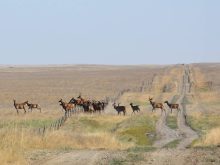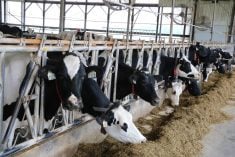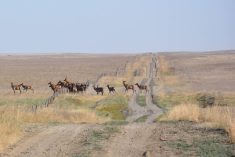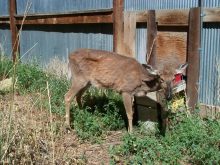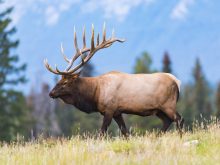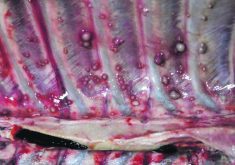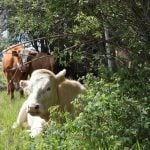NISKU, Alta. — When Bob Boos sells a truckload of elk, he holds his breath. If the mandatory tests for chronic wasting disease come back negative, he can breathe a sigh of relief and know he will be paid for his animals. Until then, he wonders if he will have a business the following week.
If he sells an animal to a farm within Alberta, he must worry that any tests on those animals within five years will come back negative, or he will be caught in a government search to find the source of the disease.
Read Also
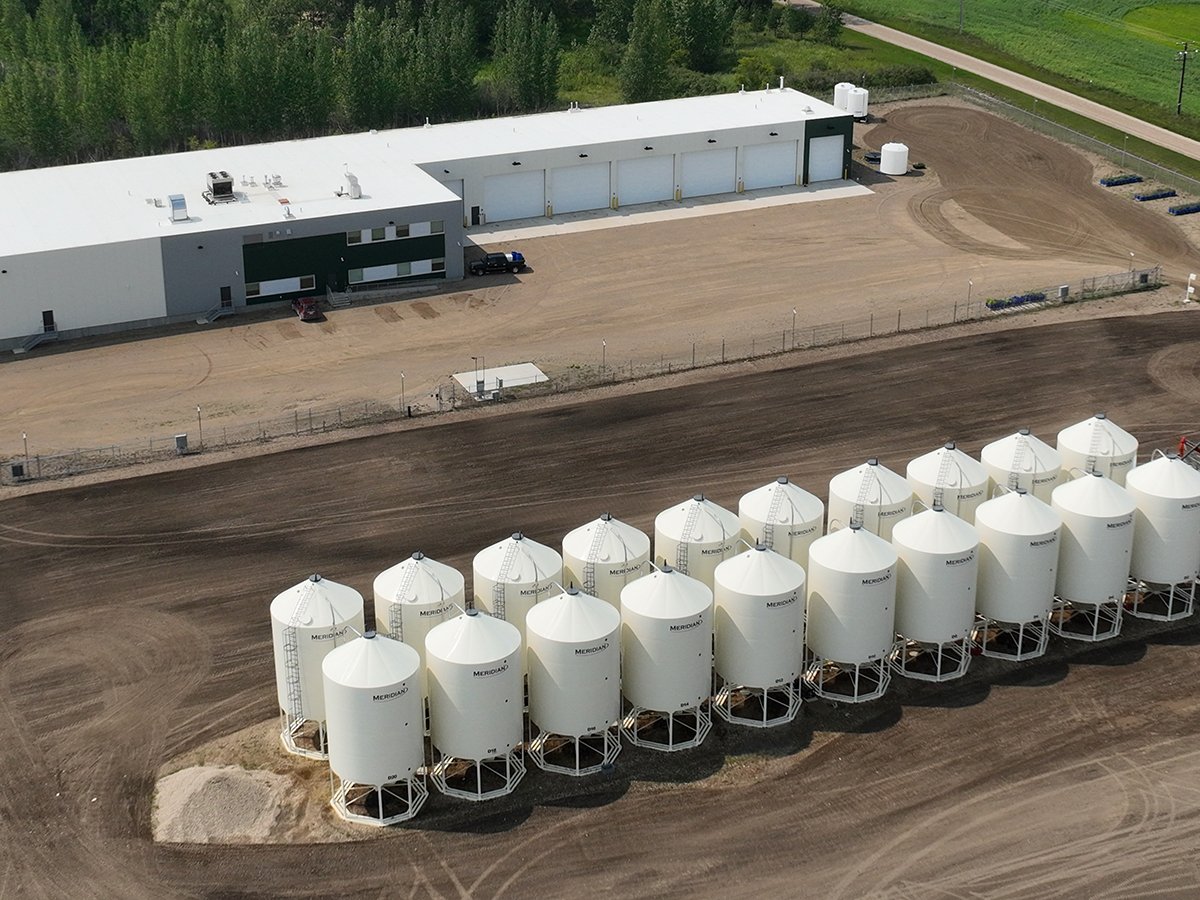
Saskatchewan firm aims to fix soil with compost pellets
In his business, Humaterra, Leon Pratchler is helping farmers maximize yields in the weakest areas of their fields through the use of a compost pellet.
“As a producer, we have lost our ability to sell to other farmers because of trace-back and trace-out. There is a fear of being caught in the CWD circle for five years from the time you sold your animal. If they find a CWD positive animal on that farm, in the next five years you will be shut down,” said Boos, who runs Whispering Winds Ranch, a 700-head bison and elk farm in Manning, with his wife, Anita.
Related stories in this issue:
“We have a double standard. As a bison producer, it is much less stress and not as much governance and regulation. As an elk producer, every time I have someone come to the farm, or send an animal to slaughter, I worry about biosecurity. When I get the head test results, I worry if I will have a business next week.”
Boos feels few grain or livestock producers understand the thick book of rules, regulations and inspections elk producers must follow to stay in business.
New rules proposed by the Canadian Food Inspection Agency could make it even more difficult for the 113 remaining Alberta elk producers to stay in business.
“The elk industry is caught in between the politics of provincial regulations and federal regulations. It is a combined effort of both. We have politics and emotion governing our industry, not science and reality.”
Over the next few weeks, elk producers will submit feedback on CFIA’s draft standards dealing with CWD in herd certification programs.
Participation in the regional herd certification program is voluntary, but once producers are enrolled, compliance is mandatory. Producers wanting to ship elk to the United States must be enrolled in the program and have achieved certified status, which takes at least five years.
In Alberta, there are 61 elk producers on the CWD herd certification program. Of those, 53 have achieved certified status level. In Manitoba, there are three registered and two producers with certified status. In Saskatchewan, there are 14 registered and 10 have received certified status.
Under the proposed rules, herds enrolled in the herd certification program after March 31 must be in pens that are double-fenced to prevent fence-line contact between farmed cervids and wild cervids. Any hay for cervids must be taken out of the field and stored in a secure area within one month of baling and not come from an area where there is known CWD.
While the cost of double fencing is prohibitive, the feed regulations will make it difficult to source feed, especially in drought years, said Boos.
“Two years ago, there was massive droughts, and millions of tonnes of grain and feed was shipped all over. If you are a cervid farmer, you can’t get feed from anywhere in your area with CWD. Why are you killing my industry and nobody else has these restrictions?” asked Boos.
Restricting feed sources and double fencing are two of the suggested changes to the regulations in an attempt to limit the spread of chronic wasting disease. Despite many regulations, farmed elk still test positive for CWD with no clear reason.
“CFIA wants to change regulations because they don’t think the program is working. They know it is not working. They are destroying our ability to do business with every proposal that comes up. Can you imagine trying to keep your farm running even with just one issue?” said Boos.
Between 1996 and 2016, 62 cervid farms across Canada tested positive for CWD. In Alberta, between 2011 and 2022, 22 cervid farms had a confirmed case of CWD. In Saskatchewan, during the same time, 50 cervid farms had a confirmed case of CWD.
Elk producer Herman Butler said changes must be made.
“It is very important we get something done; sooner the better. I know of four different elk operations where the next generation says this whole business stinks. All we get is a whole bunch of rules and regulations dumped on us. I am getting up there. My son has seen how it has gone over the years and there is no future in elk farming and this is from someone who works with them every day.
“I find it such a sad, sad thing to have to say something like this. I am 78 and I am still working full time. I love what I am doing with the elk, but there will come a time when I can’t and I’d like to turn it over to my son. He talks to his friends in the elk industry and no one wants to take it over.”
The thick book of rules was designed to prevent CWD from transferring from wild elk and other cervids to farmed elk. CWD has been detected in cervids in four provinces and 30 American states. To get a handle on the disease in wild populations and track the western and northern spread of CWD, hunters are asked to submit heads from specific hunting areas. In Alberta, CWD continues to occur primarily in mule deer compared to white-tailed deer and is more common in males than females.
During the 2022 Alberta hunter surveillance program, 714 cervids tested positive for CWD. The location of each hunted animal is noted and if the wild cervid tests positive and is within a specific area of a farmed herd, the farmed herd is subject to specific rules.
“Our entire business is hinging on that person giving proper information. If a wild cervid is found within 20 miles of your area, you lose your ability to export. There is no accountability for the person dropping the heads off,” said Boos.
At its peak, there were 600 elk farms in Alberta. Farmers could fetch $100 a pound for the velvet from their animals or $20,000 for a breeding animal. Optimism was high and the money flowed freely as Canadian elk antler and animals were in demand around the world.
Then an elk imported from the U.S. to Saskatchewan tested positive for CWD and the borders to the lucrative Chinese and Korean markets closed for all Canadian elk producers and the troubles began.
In 2022, there were 134 elk farm licences and only 119 of the farms had elk. The provincial herd totalled slightly less than 8,000.
Between farm sales, velvet and meat, Alberta’s elk industry was valued at $12 million.
Contrast that with New Zealand’s red deer industry, which is worth about $254 million. New Zealand has 1,400 red deer farms with 833,000 deer and a goal to expand its venison and other products into North America.
Canadian elk farmers can sell the velvet from the elk for about $25 a pound, compared to about $40 a pound in New Zealand because of their access to markets closed to Canada.
Boos believes there is a viable elk industry, but changes must be made. Instead of trying to eradicate the disease, regulations should focus on control and management, he said.
Jon Reed, president of the North American Elk Breeders Association, said with the discovery of CWD in a Washington state cervid, the rules need to change to adapt to reality.
“CWD has been around for a long time and hasn’t decimated our wild population,” said Reed.
Many cervid producers believe changes need to be made if a positive animal is found on the farm.
It’s those rules that will end the industry and they need to change, said Boos.
“Most of those people making the rules have never stepped on a farm. How can you convince the people that the rules they are coming up with are killing us and they think they’re saving the world?”
“The producer has everything on the line. Everyone in government has no vested interest and nothing to lose. We have everything to lose. We’re doing it because we love our industry but we are all being pushed out by over regulation.”



